Most of us take balance for granted. When we snowshoe, like when we walk or run, we don’t think about balancing ourselves when we take a step forward or backward. It just happens. As we age, our balance naturally decreases because our muscles become weaker. Fortunately, there are exercises we can all do, including beginners, to postpone the aging effect and even improve our balance now and into the future.
Making these exercises part of a balanced exercise program can increase your strength, balance, and maybe even more importantly, your self-confidence when approaching a steep incline or narrow trail. Doing any exercise after a brief warm-up is always best, so don’t forget to go for a light walk or short hike before trying these. As with any activity, have fun and set reasonable long and short-term SMART goals.
So, without further ado, here are a few exercises to improve balance on and off the trail.
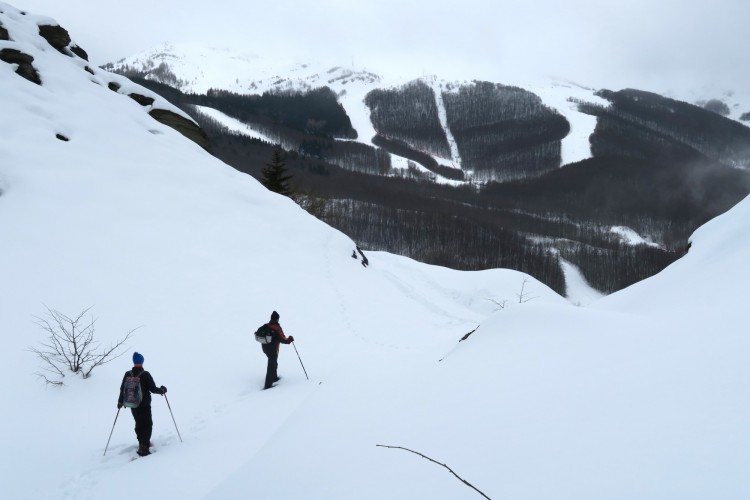
Balance is so important, especially for snowshoeing in hilly or mountainous areas. Photo by Nicola Poluzzi on Unsplash
Single-Leg Raises
To perform this exercise, grab a chair and place it on one side of you. Slowly bend your knee and raise your foot off the ground in front of you. The angle between your thigh and upper body will decrease. Raise your leg as high as it feels comfortable and hold it for 5 seconds. Then lower your leg slowly to the ground and repeat with the opposite leg.
If you find yourself having difficulty with this exercise, grab another chair and place it on the other side of you to help you balance. If you cannot hold your leg up for 5 seconds, raise it and lower it slowly as if you were marching. Again, going slow is the key.
If this exercise is too easy, try balancing without the help of either chair. The next progression would be to perform this exercise with one eye closed and then both eyes closed.
Read More: Building & Maintaining Endurance For Snowshoeing
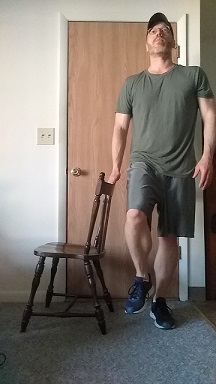
If you find yourself having difficulty with the single leg raise, grab another chair and place it on the other side of you to help you balance. Photo: Scott Hotaling
Side Leg Raises
This exercise is done in much the same way as the single-leg raise. Except now, raise the leg to the side instead of in front of you, keeping your leg straight.
One of the key checkpoints here is to make sure when you raise your leg to the side that your upper body/trunk doesn’t bend the opposite way to help lift your leg. Instead, keep your spine aligned and raise your leg without bending or shifting your upper body.
Again, it would be best to do this exercise in a slow and controlled manner. Aim for ten repetitions on both sides.
Read More: Back To Basics: Back Exercises For Snowshoers
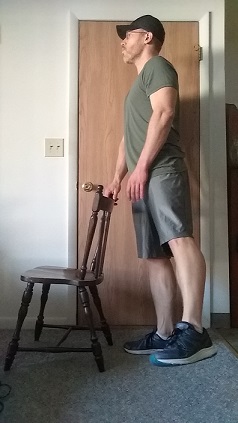
When performing this exercise, keep your spine aligned and raise your leg without bending or shifting your upper body. Photo: Scott Hotaling
Walking Heel to Toe
Carefully put the heel in front of your toes of the other foot like walking on a tightrope. If you need help balancing, use a long table, countertop, or wall to help you. Then, take a step with your back foot, placing the heel of your foot down first, in front of the toes of your other foot. Continue for ten steps.
Try not to look down at your feet while walking and focus your attention forward. Don’t be discouraged if you struggle with this exercise at first. It can be challenging. If it’s easy for you, try closing one eye and then both eyes while walking for an added challenge.
Read More: Improve Your Ankle and Wrist Mobility for Snowshoeing

When completing the heel-to-toe exercise, try not to look down at your feet while walking and focus your attention forward. Photo: Scott Hotaling Photo: Scott Hotaling
Chair Assisted Squat
Begin by sitting in a sturdy chair with good posture. A typical wooden chair works best. Avoid recliners, sofas, and stools for this exercise. Using both arms of the chair to help support you, stand up, focusing your attention in front of you. This is an assisted form of a squat, an excellent exercise for the glute (butt) muscles at the hip and the quadriceps (anterior thigh) muscles at the knee.
If you need more of a challenge, use one arm to support your progress until you can stand up without support. When not using your hands to support yourself, cross them in front of you as you perform the exercise.
As with all these exercises, go slow and pause for 1-2 seconds when you stand up, ensuring you are completely balanced before “squatting” back down into the chair. Remember, staying balanced while sitting down (eccentric phase) is just as important as standing up (concentric phase). You should do both phases with a neutral spine (don’t slouch) and in a controlled manner.
Read More: 3 Leg Exercises Every Snowshoer Can Do Without Weights
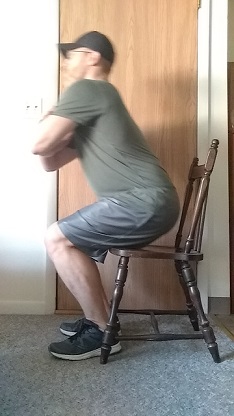
When not using your hands to support yourself in the chair-assisted squat, cross them in front of you as you perform the exercise. Photo: Scott Hotaling
Calf and Heel Raises
Using a chair to help yourself, raise both your heels off the ground and stand on your toes. Pause for 1-2 seconds and slowly lower your heels back down to the floor. Nest, raise your toes so that you are balanced on your heels. Pause for 1-2 seconds and repeat. This movement is an excellent ankle strengthening exercise and can be very challenging, especially when balancing on your heels. Aim for 8-12 repetitions. Avoid rocking back and forth too quickly between your heels and toes.
Don’t be discouraged if you find some or all of these exercises difficult. Instead, go slow and do the best you can. With practice, these exercises will improve your balance and help give you the confidence to tackle the trails you never thought possible!
How have these exercises worked to improve your balance? Are there other exercises that you recommend? Please share your thoughts in the comments below.
This article was originally published on April 17, 2019, and most recently updated on July 2, 2022.
Read Next: Don’t’ Forget To Stretch For Snowshoeing


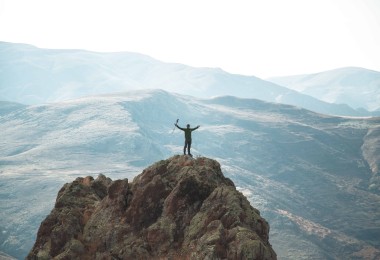
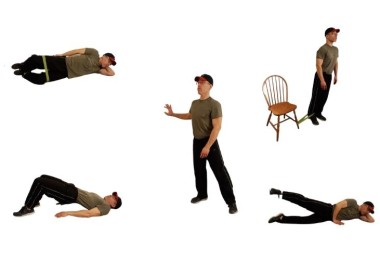

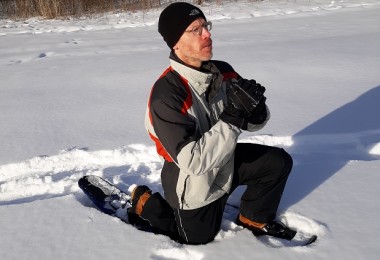

Leave a Comment